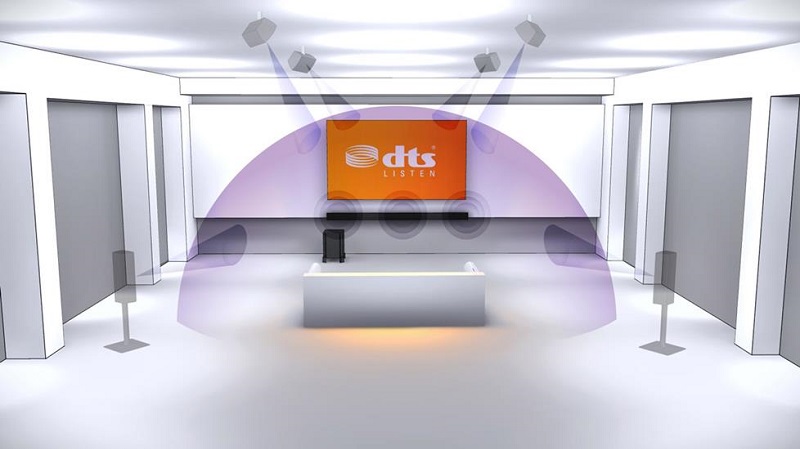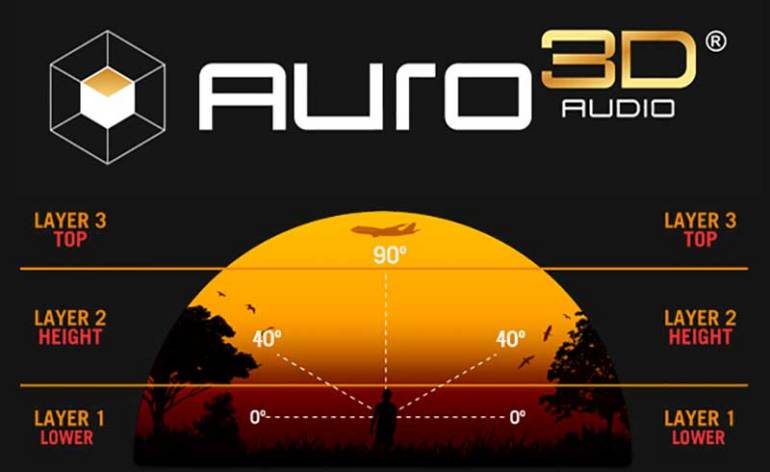What’s the Deal with AURO-3D Upmixing?
Okay, you’ve got a question and you don’t know how or where to ask it. What’s the deal with AURO-3D upmixing? There are people online who seem to indicate that it is “the best” upmixing. Is that true? You’ve seen people lamenting that they can’t find an AV receiver with AURO-3D. What’s the deal? Should you care about AURO-3D? Let’s discuss!
What is AURO-3D?
AURO-3D, as we explained when it first started making waves in the audio industry, is different than the other “overhead” audio solutions. While Dobly Atmos and DTS:X are both object-based , AURO-3D is a PCM-based lossless “channel-based” solution. It really doesn’t matter all that much since AURO-3D filed for bankruptcy not that long ago. While supporters will point out that the format technically still exists (and is still owned by the creator), we would remind you that it has never seen widespread adoption. An audio format with no content is pretty useless.
But It Is Really About the Auromatic Upmixer
Again, those vocal supporters online will proclaim that the AURO-3D format isn’t as important as the Auromatic Upmixer. Like the Dolby and DTS solutions, AURO-3D created its own upmixer for taking other content and using all the AURO-3D speakers. Proponents will claim that the Auromatic Upmixer does a much better job than the other upmixers. This is why they say that AURO-3D is important for your AV receiver.

What They Aren’t Telling You
The real deal with AURO-3D Auromatic upmixing is that it is far more complicated than they tell you. First of all, many people confuse “different” with “better” in home theater. AURO-3D is a completely different audio format than Dobly Atmos and DTS:X. While Dolby’s and DTS’ solutions generally have their speakers in the same locations, AURO-3D has different locations. Dolby and DTS have angles for ceiling speakers, AURO-3D wants your height speakers to be directly above your floor-level speakers. This means that to get the Auromatic Upmixer to work at all, you may have to mislabel your overhead speakers (or place them for AURO-3D and not the other two dominant formats).
Provided you placed your overhead speakers according to Dolby and DTS guidelines, to get AURO-3D Auromatic upmixing to work, you may have to label them in your AV receiver incorrectly. Top middle speakers won’t work at all with AURO-3D so people often label these as top fronts. Which they obviously aren’t. This means that the other two formats won’t be upmixed (or natively played) properly. At the same time, the Auromatic Upmixer won’t be properly played because the speakers aren’t in the right locations. That just sounds like a lose-lose to us.
What if You Placed Them Correctly for AURO-3D?
Why? Why would you do this? Okay, let’s pretend you did. Now you have overhead speakers that can’t be used for Dolby or DTS. They don’t have equivalents in the other formats. But if you did, and you fudged the placements a little, you could use them (somewhat) for all the formats. But you’d need to reconfigure your AV receiver when switching between AURO-3D and the other formats or the speakers wouldn’t work. Definitely a hassle.
The REAL Deal
You’ve heard of FOMO. Fear of Missing Out. YouTubers and other influencers basically make a living by creating it. If you search for Auromatic upmixing, you’ll find a slew of YouTube videos claiming that it is the best. Why? Is it really the best? The real deal is that most of us will never have or use AURO-3D’s Auromatic upmixing. They can claim whatever they want because few people can call them out. If you do enough research, you’ll find users that have actually tried using the upmixing and mostly find that it isn’t all that much different than the other solutions. But since Reddit often ends up being an echo chamber, the claims of AURO-3D superiority won’t go away.

If you have an AV receiver that has AURO-3D, you can, of course, try it out. But if you don’t reconfigure your speakers for proper placement, then what are you really hearing? Sounds aren’t coming from the correct place so you aren’t really hearing the Auromatic Upmixer the way it was intended. If you set your system up for AURO-3D (again, why?), then your speakers won’t be placed properly for the Dolby or DTS formats. Since AURO-3D has so little native content, there really isn’t any reason for anyone to set up a system for it. The only reason anyone is talking about the upmixing. is because they heard someone else talking about it and have FOMO.
The deal with AURO-3D upmixing is that there is no deal. Move along and let it die.



There’s so much wrong in here, I dont even know where to start.
1st: Auro 3D supports Front Height and Surround Height positioning. DTS:X supports these as well. Auro supports Front Height, but not surround heights.
2: on many processors and receivers, Auro3D also supports Rear heights, which Atmos DOES support. So a universal setup supported by all 3 formats is Front Height + Rear Height.
3: Auro3D does not support Top-Middles as mentioned, however there are several processors and receivers out there that will use Atmos Top-Middles as a Voice of God array for Auro3D and Imax Enhanced. So in those cases the Top-Middle speakers still get uses. Also the Top-Middles are positionally appropriate for use as Surround Heights if one would rather do that instead. I’ve uses them as such and it sounds very immersive when used with all three formats.
DTS:X actually has a preference for Front Height and Rear Height…..NOT tops like Atmos. So to be technical, Atmos is the odd man out…..ALL the formats besides Atmos are based on height style positioning including DTS:X(Pro), Auro3D as well as MPEG-H. Atmos is the only one that defaults to Tops. And even then, Atmos still supports front heights and rear heights, just as additional speakers aside from the overheads.
The best setup to take advantage of all three formats is actually 13.1 channels in the form of 7.1.6 with Front Height + Top-Middle + Rear Height. When using Auro3D it should convert the TM to a VoG array.